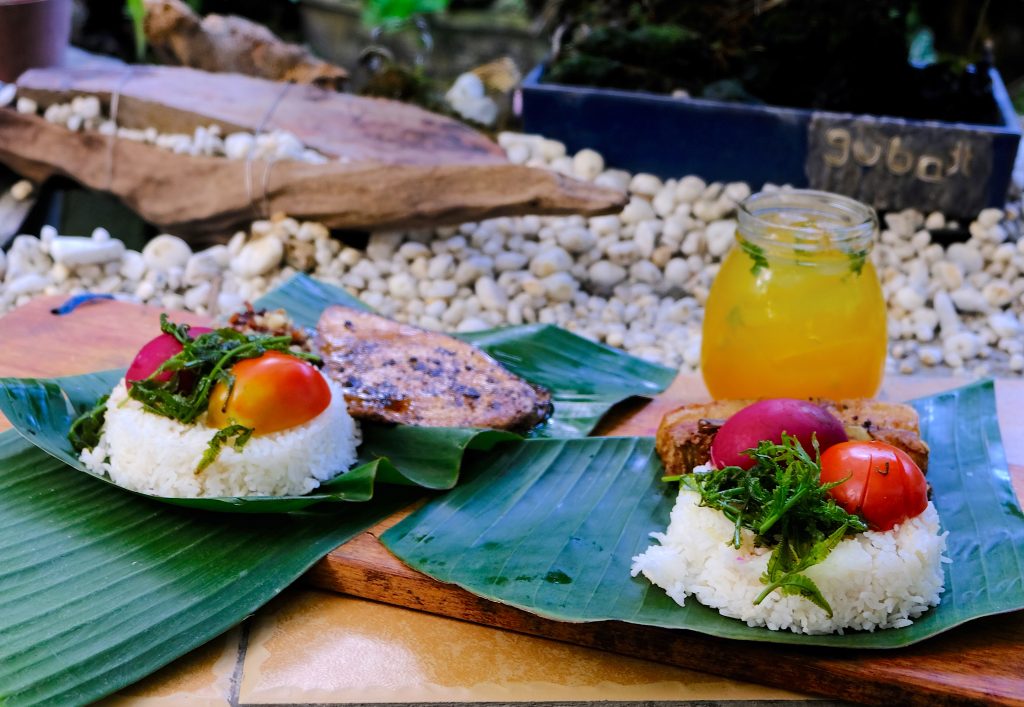Until last September when I found out I was hypertensive—thanks for the genes, dad!—I love, love, loved salted egg or itlog na maalat, or if you please, itlog na pula.
It’s salty (duh) but also very rich in umami. With tomatoes and onions, it can be a meal in itself savored over white rice. Steaming is preferred, but I’d take bahaw or leftover rice anyday over newly cooked rice.

Other than its distinct taste and texture (not quite like a boiled egg, its yolk is sometimes oily), the salted egg has another characteristic that betrays its eater. Because of the distinct magenta color of its shell—a way to distinguish these fermented eggs from regular ones—eating a salted egg inevitably turns one’s fingers a purplish red. A pesky dye to rid of, but really it’s part of the charm of eating itlog na maalat.
Why red?
Filipino food researcher and chef Nancy Reyes-Lumen attributes salted eggs to early Chinese settlers and wagers that the red color (although it is now predominantly more purple than red) is likely an influence of the Chinese, too, who believe that the color brings luck.
Food scholar Bryan Koh, in his book “Milkier Pigs and Violet Gold: Philippine Food Stories,” says that traditionally, salted eggs produced locally—typically in duck-raising locales like Pandi in Bulacan, Iba in Zambales and Victoria in Laguna—use a very specific dye to color the eggs after they’ve been cured in a salted mud mixture for over two weeks, and boiled for hours.
He refers to a red pigment called grana, which also comes in crystal form. However, in most salted egg factories, using edible food color is now the norm. The hue is intensified by adding vinegar to the mix to also make sure that the color sticks—whether to the shell or the hands of the eater, we can’t be sure.
“Organic” producers, on the other hand, insist on using only naturally occurring colors, sometimes even selling white-shelled salted eggs much to the confusion of both sellers and buyers. This is after a controversy concerning a suspected carcinogenic dye used in making salted eggs in China was brought to light in the early 2000s. Sudan red, a popular substitute for grana, has since been banned in Hong Kong, China, the European Union, Australia and Canada. While local authorities did not issue a similar ban, mostly because grana was the prevailing dye of choice among duck raisers, others took it to themselves to rid of the colorant altogether.
Some opted for plant-derived dyes from onions, for example, although its color is more muted. While other more creative sellers resorted to other distinguishing elements such as packaging. In Ilocos, for example, instead of dyeing cured eggs, they wrap it in corn husks.
A study in pink
Why red is an omnipresent color, from customs to traditions, from the food we eat to the color of the restaurant decor, boils down to human psychology. A red substance, after all, is what makes us human: blood.
Its far more muted cousin, pink, on the other hand, is relatively younger and is associated primarily with matters of gender or gender-orientation. Coined in the late 17th century, pink was described merely as a paler red. This association with red might explain why it is imbued with the same reverence people reserve for the former, and why here in the Philippines, it is used to color some notable food including, but not limited to, a range of fermented foodstuff from bagoong to buro.
Pink because of a red substance
As a kid, I’ve always thought that bagoong (fermented shrimp paste), or alamang as it is referred to in our local tongue, is naturally pink because of the baby shrimps used to make it. I blame National Geographic for this.
A little fun fact that I reveled in sharing with my friends back then was that flamingos are pink because they like to eat a specific species of shrimp, which is true, but only partially because their other diet staples also contribute to their feather color. Hence, I thought shrimps are pink and so are fermented shrimps.
Then I was introduced to balaw-balaw, a pink fermented condiment that also has shrimp mixed with rice, popular in our (almost) neighbor municipality of Angono. It is comparable to the buro of the Kapampangans made with fermented fish and rice, although that is more orange than pink.
Both are a kind of mush often verging on a liquified sauce with a very distinguishable smell that some find repulsive but I have grown accustomed to, thanks to my dad who likes to eat it with fried fish—usually galunggong or tinapa.
It was only recently that I learned that an extra ingredient is added to bagoong and balaw-balaw as well as to some kinds of buro to actually facilitate fermentation, and that its resulting pink color is only a consequence of the process.
Koh detailed the process in his book, singling out an ingredient called angkak, a form of rice fermented on red yeast called Monascus purpureus, and added to the mix to introduce microorganisms to the process of fermentation.
Recent studies have shown that red yeast rice has a substance identical to that of statins that can possibly aid in lowering cholesterol levels but as with any medication, there are some side effects to consuming it in lieu of cholesterol-lowering drugs, particularly affecting the kidney. That means my dad might want to slow down on his balaw-balaw eating habit.